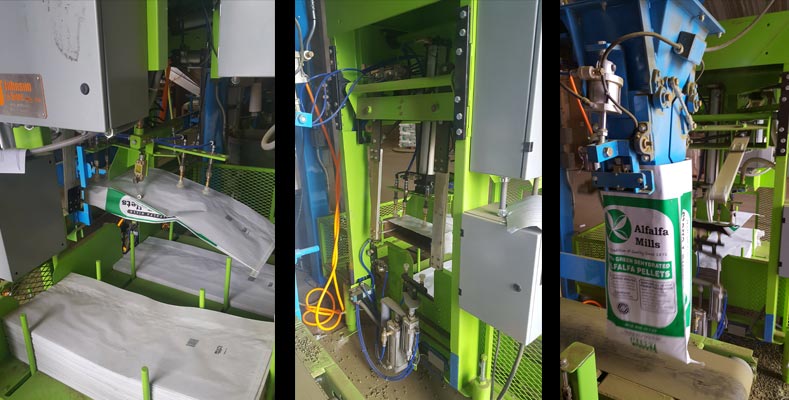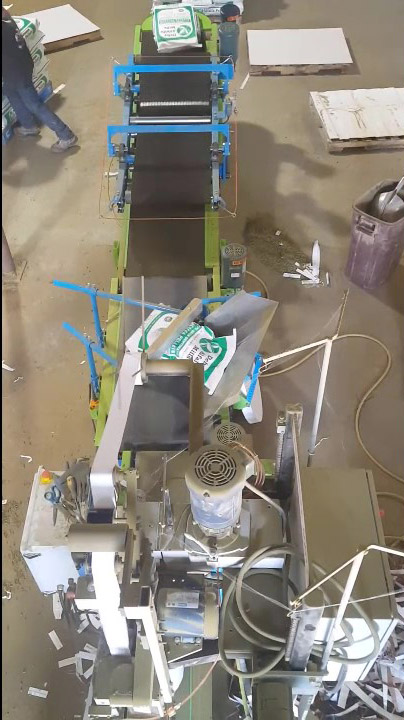The video below shows an automated feed bagging system that quickly fills and packages multi-wall paper bags with 50lbs. of alfalfa pellets (pasture cubes or range cubes) to be used for livestock feed. This system uses a high-speed net weigh bagger with 2 internal weigh hoppers.
Process Description for the Automated Feed Bagging System
A belt feeder precisely doses 50lbs. of livestock pellets into 1 of the 2 internal weigh hoppers. Then, the feed is discharged into a bag below. Bags are automatically placed using an automatic bag placer.

Automatic bag hanger: picks up a bag, opens the mouth, and spouts it on the bagger
When they are filled, the bags drop onto the closing conveyor where an operator manually reforms the top of the bag before sending it through a high-speed bag sewing machine. After sewing, bags are “knocked down” and turned before being conveyed through a bag flattener. The bags are flattened and then discharged onto a gravity roller conveyor where multiple operators pick up the bags and manually palletize and stack them on a shipping pallet.

Top-down view of bagging system showing high-speed sewer, turning conveyor, bag flattener, and palletizing
More Opportunities for Automation
Further automation could be achieved by adding a bag palletizing robot and system at the end of the bagging line, which would provide the fastest return on investment. Additionally, an automatic bag reformer could be used after a bag drops onto the conveyor and before the high-speed bag sewing machine. This would help to straighten, or “reform”, a bag top before sewing.
Ready for a feed bagging system upgrade?
Speak with one of our sales engineers today and get a price quote!
